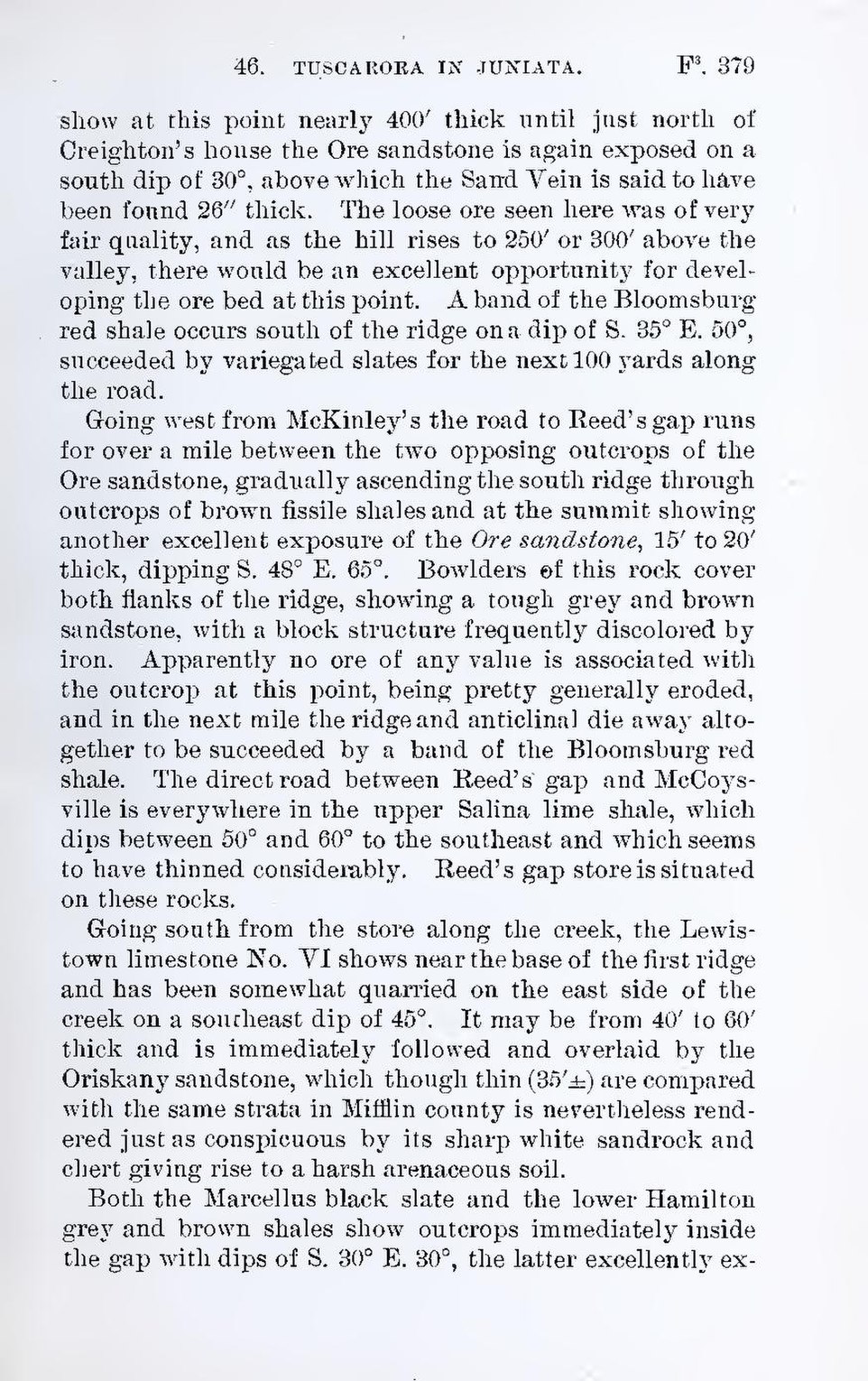show at this point nearly 400′ thick until just north of Creighton’s house the Ore sandstone is again exposed on a south dip of 30°, above which the Sand Vein is said to have been found 26″ thick. The loose ore seen here was of very fair quality, and as the hill rises to 250′ or 300′ above the valley, there would be an excellent opportunity for developing the ore bed at this point. A band of the Bloomsburg red shale occurs south of the ridge on a dip of S. 35° E. 50°, succeeded by variegated slates for the next 100 yards along the road.
Going west from McKinley’s the road to Reed’s gap runs for over a mile between the two opposing outcrops of the Ore sandstone, gradually ascending the south ridge through outcrops of brown fissile shales and at the summit showing another excellent exposure of the Ore sandstone, 15′ to 20′ thick, dipping S. 48° E. 65°. Bowlders of this rock cover both flanks of the ridge, showing a tough grey and brown sandstone, with a block structure frequently discolored by iron. Apparently no ore of any value is associated with the outcrop at this point, being pretty generally eroded, and in the next mile the ridge and anticlinal die away altogether to be succeeded by a band of the Bloomsburg red shale. The direct road between Reed’s gap and McCoysville is everywhere in the upper Salina lime shale, which dips between 50° and 60° to the southeast and which seems to have thinned considerably. Reed's gap store is situated on these rocks.
Going south from the store along the creek, the Lewistown limestone No. VI shows near the base of the first ridge and has been somewhat quarried on the east side of the creek on a southeast dip of 45°. It may be from 40′ to 60′ thick and is immediately followed and overlaid by the Oriskany sandstone, which though thin (35′±) are compared with the same strata in Mifflin county is nevertheless rendered just as conspicuous by its sharp white sandrock and chert giving rise to a harsh arenaceous soil.
Both the Marcellus black slate and the lower Hamilton grey and brown shales show outcrops immediately inside the gap with dips of S. 30° E. 30°, the latter excellently ex-
